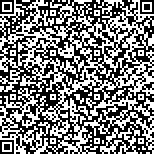下载中心
优秀审稿专家
优秀论文
相关链接
摘要

从最早的星载激光雷达空间技术实验LITE出发,回顾了已成功发射的多颗星载激光雷达发展历程。详细阐述了LITE、CALIPSO等星载激光雷达在大气遥感领域,特别是气候环境变化和数值预报模式研究上所取得的成就。主要从全球气溶胶垂直结构及其辐射强迫、全球云垂直结构和特征、气溶胶-云-降水相互作用和气溶胶数据在雾-霾和沙尘天气预报中的应用等4个方面进行展开说明,并且深入分析了未来星载激光雷达在大气风场和大气成分探测方面所面临的需求和挑战。在大气风场探测需求方面,结合星载激光雷达探测优势从提高热带地区的天气预报准确率、提高非地转条件下中小尺度短时临近预报水平和填补卫星高/低空急流监测技术空白等3个方面进行详细论述。在大气成分探测需求方面,与传统被动探测仪器相比较,突出激光雷达在信噪比、CO2垂直结构和夜间探测上的明显优势。最后,指出全球风场和大气成分探测将成为未来星载激光雷达的重要发展方向。
This study reviews the historical development process of spaceborne LiDAR for atmospheric detection along with the major achievements to date. The future plan with regard to this technology is investigated as well. First, we review the history of several successfully launched spaceborne LiDARs, beginning with the first spaceborne LiDAR technology experiment LITE. Then, we expound on the primary achievements in the field of atmospheric remote sensing, particularly in terms of climatic and environmental changes, and highlight numerical prediction model studies based on spaceborne LiDARs, such as LITE and CALIOP. Existing achievements include (1) the global aerosol vertical structure and its attendant radiative forcing, (2) the global cloud vertical structure and its associated features, (3) aerosol-cloud-precipitation interaction, and (4) the applications of aerosol vertical data in the numerical prediction of fog/haze and dust. We intensively analyze future demands and challenges in terms of atmospheric wind field detection and atmospheric constituent retrieval from a spaceborne LiDAR. With respect to wind field retrieval, a spaceborne LiDAR may enhance the accuracy of weather forecasts in tropical regions, improve the nowcasting of small-scale and mesoscale weather under the nongeostrophic condition, and fill in the gaps with regard to monitoring an upper/lower level jet stream. LiDARs also have competitive advantages over traditional passive sensors with regard to atmospheric constituent retrieval because of the former's high signal-to-noise ratio, unique CO2 vertical structure, and nighttime detection capability. Finally, the spaceborne LiDAR may be used to measure global wind field and atmospheric constituents.

